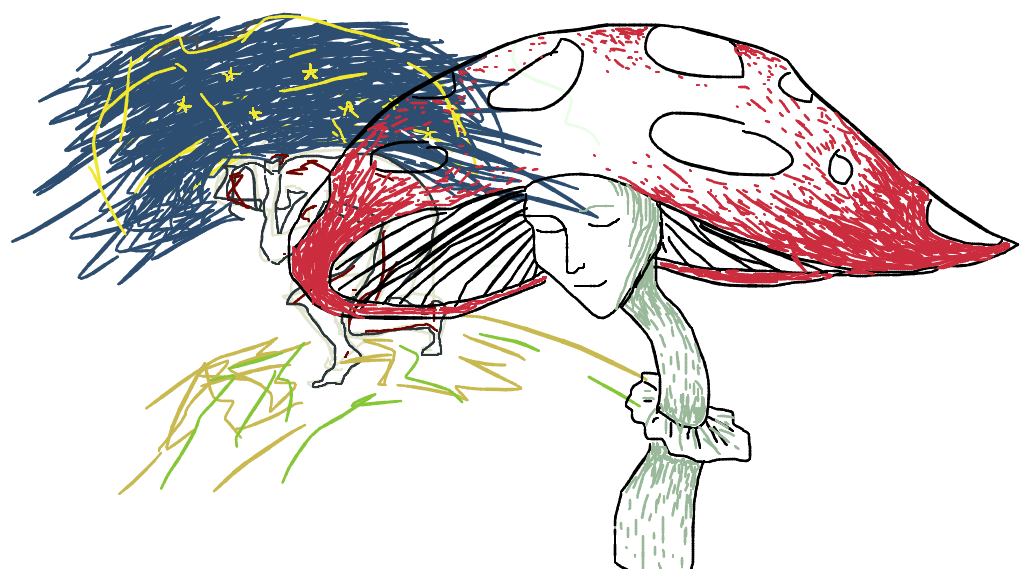jakubfiala / Atrament.js
Programming Languages
Projects that are alternatives of or similar to Atrament.js
Atrament
A small JS library for beautiful drawing and handwriting on the HTML Canvas
Atrament is a library that enables the user to draw smooth, natural drawings and handwriting on the HTML canvas. The algorithm was originally developed about 2 weeks after I started learning JavaScript, as I wanted to build a collaborative drawing space on the web, which ended up being 1WALL. I wanted the drawing to feel natural and comfortable, and the result to be smooth and pleasing. Years later, I've taken the algorithm, improved it, rewrote it in ES6 and made it into a neat little library.
FEATURES:
- Draw/Fill/Erase modes
- Adjustable adaptive smoothing
- Events tracking the drawing - this allows the app to "replay" or reconstruct the drawing, e.g. for undo functionality
- Adjustable line thickness and colour
Enjoy!
Installation
as a module
If you're using a tool like webpack or browserify to bundle your code, you can install it using npm.
- install atrament as a dependency using
npm install --save atrament. - You can access the Atrament class using
const Atrament = require('atrament');
script tag
Include the script located at dist/atrament.min.js in the <head> tag of your HTML.
Alternatively, you can use Bower: bower install atrament and include bower_components/atrament/dist/atrament.min.js as a script tag.
polymer
Thanks to rubenstolk, you can also use the sc-atrament Polymer element.
Usage
- create a
<canvas>tag, e.g.:
<canvas id="sketchpad" width="500" height="500"></canvas>
- in your JavaScript, create an
Atramentinstance passing it your canvas object:
const canvas = document.querySelector('#sketchpad');
const sketchpad = new Atrament(canvas);
- you can also pass the width, height and default colour to the constructor:
const sketchpad = new Atrament(canvas, {
width: 500,
height: 500,
color: 'orange',
});
- that's it, happy drawing!
Options & config
- clear the canvas:
sketchpad.clear();
- change the line thickness:
sketchpad.weight = 20; //in pixels
- change the color:
sketchpad.color = '#ff485e'; //just like CSS
- toggle between modes:
sketchpad.mode = 'erase'; // eraser tool
sketchpad.mode = 'fill'; // click to fill area
sketchpad.mode = 'draw'; // default
sketchpad.mode = 'disabled'; // no modification to the canvas (will still fire stroke events)
- tweak smoothing - higher values make the drawings look much better, lower values make drawing feel a bit more responsive. Set to
0.85by default.
sketchpad.smoothing = 1.3;
- toggle adaptive stroke, i.e. line width changing based on drawing speed for a more natural effect.
trueby default.
sketchpad.adaptiveStroke = false;
- record stroke data (enables the
strokerecordedevent).falseby default.
sketchpad.recordStrokes = true;
- export as image:
//we have to get the dataURL of the image
const dataURL = sketchpad.toImage();
//then we can, for instance, open a new window with it
window.open(dataURL);
Events
Dirty/clean
These events fire when the canvas is first drawn on, and when it's cleared.
The state is stored in the isDirty property.
sketchpad.addEventListener('dirty', () => console.info(sketchpad.isDirty));
sketchpad.addEventListener('clean', () => console.info(sketchpad.isDirty));
Stroke start/end
These events don't provide any data - they just inform that a stroke has started/finished.
sketchpad.addEventListener('strokestart', () => console.info('strokestart'));
sketchpad.addEventListener('strokeend', () => console.info('strokeend'));
Fill start/end
These only fire in fill mode. The fillstart event also contains x and y properties
denoting the starting point of the fill operation (where the user has clicked).
sketchpad.addEventListener('fillstart', ({ x, y }) =>
console.info(`fillstart ${x} ${y}`),
);
sketchpad.addEventListener('fillend', () => console.info('fillend'));
Stroke recording
Fires at the same time as strokeend and contains data necessary for reconstructing the stroke.
sketchpad.addEventListener('strokerecorded', ({ stroke }) =>
console.info(stroke),
);
/*
{
points: Array<Point>,
color,
weight,
smoothing,
adaptiveStroke,
}
*/
Programmatic drawing
To enable functionality such as undo/redo, stroke post-processing, and SVG export in apps using Atrament, the library can be configured to record the "pen strokes".
The first step is to enable recordStrokes, and add a listener for the strokerecorded event:
atrament.recordStrokes = true;
atrament.addEventListener('strokerecorded', ({ stroke }) => {
// store `stroke` somewhere
});
The stroke can then be reconstructed using methods of the Atrament class:
// set drawing options
atrament.mode = stroke.mode;
atrament.weight = stroke.weight;
atrament.smoothing = stroke.smoothing;
atrament.color = stroke.color;
atrament.adaptiveStroke = stroke.adaptiveStroke;
// don't want to modify original data
const points = stroke.points.slice();
const firstPoint = points.shift();
// beginStroke moves the "pen" to the given position and starts the path
atrament.beginStroke(firstPoint.x, firstPoint.y);
let prevPoint = firstPoint;
while (points.length > 0) {
const point = points.shift();
// the `draw` method accepts the current real coordinates
// (i. e. actual cursor position), and the previous processed (filtered)
// position. It returns an object with the current processed position.
const { x, y } = atrament.draw(point.x, point.y, prevPoint.x, prevPoint.y);
// the processed position is the one where the line is actually drawn to
// so we have to store it and pass it to `draw` in the next step
prevPoint = { x, y };
}
// endStroke closes the path
atrament.endStroke(prevPoint.x, prevPoint.y);
Development
To obtain the dependencies, cd into the atrament directory and run npm install.
You should be able to then build atrament by simply running npm run build.
I didn't bother writing tests because it's such a small package. Contributions are welcome!

